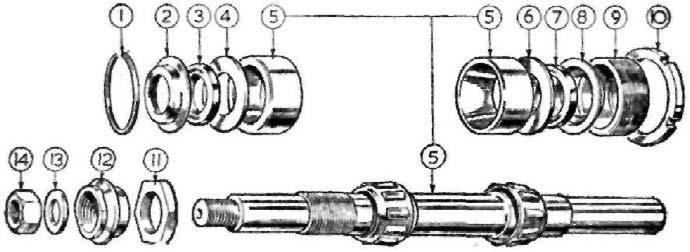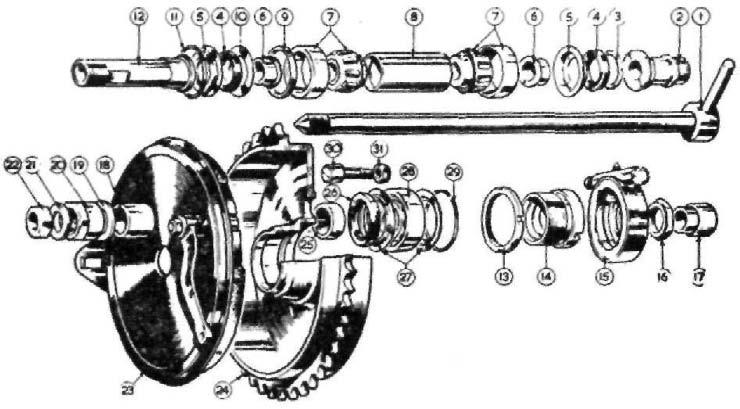
2 minute read
Lubrication
2 G FI
LUBRICATION Lightweight Models
This is by true dry sump system. The oil tank, or reservoir, is integral with the crankcase. The oil pump has only one moving part, i.e., the oil pump plunger, which rotates and reciprocates. Rotation is created by the worm gear on the timing side flywheel axle.
Reciprocation is caused by engagement of the oil pump guide pin with the profiled groove in the oil pump plunger. The oil pump is designed so that the sump scavenging capacity is greater than the delivery, thus keeping the crankcase sump free of oil during normal running conditions.
Whilst the oil reservoir is integral with the crankcase, oil is fed to the pump by gravity, on the same principle as a machine fitted with a separate oil tank, but without the use of external oil pipes. Engine oil pump. If, for any reason, the crankcase is dismantled the oil pump plunger must be removed from its housing before attempting to separate the crankcase halves. It is also necessary to remove the small timing pinion. Important. Under no circumstances must either the pump plunger or guide screw be disturbed in ordinary routine maintenance. Engine oil circulation. Provision is made to observe the oil circulating, which is visible after removing the oil filler cap on the right side of the crankcase.
The oil pump forces oil through:— (a) Passages drilled through the timing side flywheel axle, timing side flywheel and crank pin to lubricate the timing side bearing and the big-end bearing. The splash passes to interior of cylinder, to lubricate the cylinder and piston, and then falls into the crankcase sump. (b) From the front oil pump housing to the rocker box via passages in the cylinder barrel, lubricating the rocker gear and valve stems. Oil from the rocker gear drains by gravity via the push rod tunnels to the timing gear case at a pre-determined level. The over-spill drains into the crankcase sump. (c) The oil pump extracts oil from the crankcase sump, metal impurities are collected by a magnetic filter incorporated in the sump drain plug. The oil is again filtered by a fabric filter located in the crankcase, (see Fig. 3) before returning to the oil tank reservoir.
For valve guide lubrication see paragraph "Adjustment of oil feed". The oil reservoir. The normal oil level is 1 inch below the filler cap orifice, the oil content is 2½ pints. Run the engine for a short period to scavenge the sump, before “topping up”.
After the first 500 miles (800 kilometres) again at 1,000 miles (l600 kilometres) and subsequently at 5,000 mile intervals (8000 kilometres) the oil reservoir should be drained the oil filter cleaned in petrol and the reservoir replenished with new oil. It is preferable to drain the oil after a run and when the oil is warm. A drain plug is fitted to both the crankcase sump also the oil reservoir. The drain plug for the reservoir is close to the bottom front crankcase bolt. The crankcase fabric filter. The filter is cylindrical in shape and made




